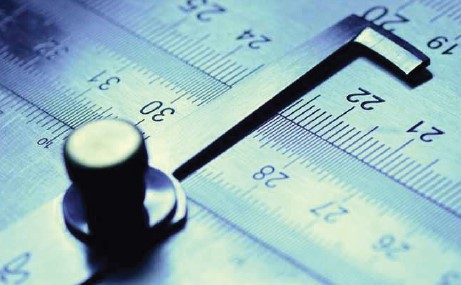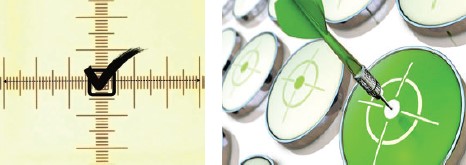Calibration and Its Increasing Importance
Today, where technology develops at a dizzying pace, the successful conclusion of studies in fields such as scientific research, industry, trade and defense depends on precise and accurate measurements.
But in general, we never think that all the devices we use can be measured incorrectly. The fact that the devices are in working condition and in good appearance seems to be sufficient for the reliability of the measurement results.
If the device does not fulfill its function, it is enough to send it to the service and have it repaired, and we assume that everything is fine when it is repaired. Unfortunately, the reliability of the measurement results must be guaranteed even for a repaired or even a new device.
That’s when calibration comes into play and saves lives, so to speak. Yes, although it may seem like a very ambitious statement, I believe that a few examples I will give you will allow you to deepen your thoughts on this subject.
For example; would you like to travel on an airplane with a broken altitude indicator? Or shopping with a jeweler’s scale that measures incorrectly, using a blood pressure monitor that measures incorrectly.
Even more seriously, the internal temperature of an incubator in the newborn unit is not suitable for the baby? Monetary loss of a distribution company that measures the device 1% lower while delivering electricity and gas to consumers? Let’s consider how erroneous measurements in anesthesia or drug dosages can put human life at risk.
Many more examples to count. Of course, none of us would like to include such risks in our lives. At this very moment, we have to activate the process we call calibration. So what is this calibration?
What is Calibration?
If we explain, calibration; it is a set of operations that determines the relationship between the values displayed by the measuring device and the measuring system under specified conditions and the values known to correspond to the measurand.
Comparing test and measuring instruments with reference standards (etalon) with known metrological properties under specified environmental conditions (temperature, humidity, vibration, etc.) can also be explained as detecting the deviation of the value displayed from the reference value.
Calibration is not;
• Adjustment,
• Repair,
• Maintenance operation.
Therefore, since calibration is not a setting or error correction process, the device calibrated does not mean a device with zero error. Calibration is important in almost every aspect of our work activities.
Of course, reliability should be very important for all these devices and more, which are exemplified below, which we encounter in many fields, especially in industry.
• Devices used for the production process
• Test and measuring instruments used for the examination of product properties
• Testing and measuring instruments used in input and final acceptance tests
• Devices used in research activities, etc.
If we explain some important issues of calibration with a few items;
1)When is Calibration Required?
• If the device has never been used or is newly purchased,
• If the device has malfunctioned and suffered a mechanical impact,
• If the device is not used in accordance with the instructions for use,
• If malfunctions have occurred in the device,
• If the adjustment mechanism is interfered with,
• If the results from the device are in doubt.

2) How is the Calibration Frequency Determined?
Measurements with the same accuracy are not expected from a calibrated device. Therefore, the calibration periods of the devices should not be determined as suitable for use. When determining this interval, the results obtained between two calibrations should not adversely affect the actual measurement result.
The time interval between calibrations varies according to the situation and depends more on factors such as storage conditions, calibration method, frequency of use, frequency of desired measurement, accuracy of desired measurement, wear effect and stability of the
instruments.
Information on calibration intervals can be obtained from the device vendor, manufacturer or national standards.
The device;
• Measurement uncertainty,
• Stability,
• Intended use and frequency,
• Experiences and norms etc. are the main factors that inform us in determining the
frequency of calibration.
3) How Should the Environment Conditions be Calibrated?
• Environmental conditions must be stable.
• The traceability of the calibrator used must be ensured.
• The measuring range of the device must be determined.
• Reference device qualities should be good.
• Calibration should be done in accordance with the measurement quality.
• Calibrations should be performed by trained personnel.
• Regardless of the true degree of accuracy, the international validity of the measurements must be ensured and the precision of these measurements must be traceable with an international measurement standard.

Studies and Innovations in the Field of Calibration in Our Country
The study was started by TUBITAK for the first time in Turkey in 1981 and a secondary level laboratory was established by TSE in 1988 and calibration service was started to be provided.
Currently, there are many accredited laboratories under which the National Metrology
Institute performs calibration at the secondary level. As in our country, there is an organization that develops and maintains many measurement standards in every country.
While conducting studies on such international standards, the comparison of measurement standards made between the highest level national center and the centers of other countries, and the compatibility of measurements made across the country with similar measurements within and outside the country are ensured.
This accepted standardization and certification is the element that ensures reliability
and international validity. There is the Turkish Accreditation Agency (TÜRKAK), which contributes to ensuring international validity and carries out its task under the Ministry of Foreign Affairs, which undertakes the task of accrediting conformity assessment bodies in
our country, supervising the continuation of their activities in accordance with international standards, and currently carrying out very important works.
Thanks to these organizations, accreditation awareness in our country is developing day by day. With all these sections, we can have a general knowledge of calibration. The statements we have made should actually reveal the awareness of how sensitive we should be as a country on this issue. If we set out with this understanding, there will be changes that can be made in many areas before us.
At the moment, there are some steps that we expect to be carried out, especially in engineering and science faculties. For example;
• Calibration awareness for a better understanding of how sensitive the analyzes in the laboratory should be,
• Metrology and quality control courses gain more importance during students’ education,
• Encouraging the development of instruments that will be beneficial for industry standardization and quality control in project and thesis studies.
• Trips should be organized in instrumentation and metrology laboratories and an idea should be gained about the economic losses caused by the lack of quality control during these trips.
Such studies will prioritize the increase of the population that is aware of the concepts of standardization and quality control and will allow for an increase in quality. Therefore, in order to meet the demands, companies will initiate studies that will increase their
efforts in this direction.
As a society, it is always aimed to go better, and at the same time, our need to always
seek better quality will be met from the domestic market. We hope that we can reach the status of a country with the best production potential by working with this awareness in all business lines.
 Süheyla Çalışkan Yılmaz
Laboratory Manager
İldam Laboratuvar Cihazları A.Ş.
Süheyla Çalışkan Yılmaz
Laboratory Manager
İldam Laboratuvar Cihazları A.Ş.



 Süheyla Çalışkan Yılmaz
Laboratory Manager
İldam Laboratuvar Cihazları A.Ş.
Süheyla Çalışkan Yılmaz
Laboratory Manager
İldam Laboratuvar Cihazları A.Ş.